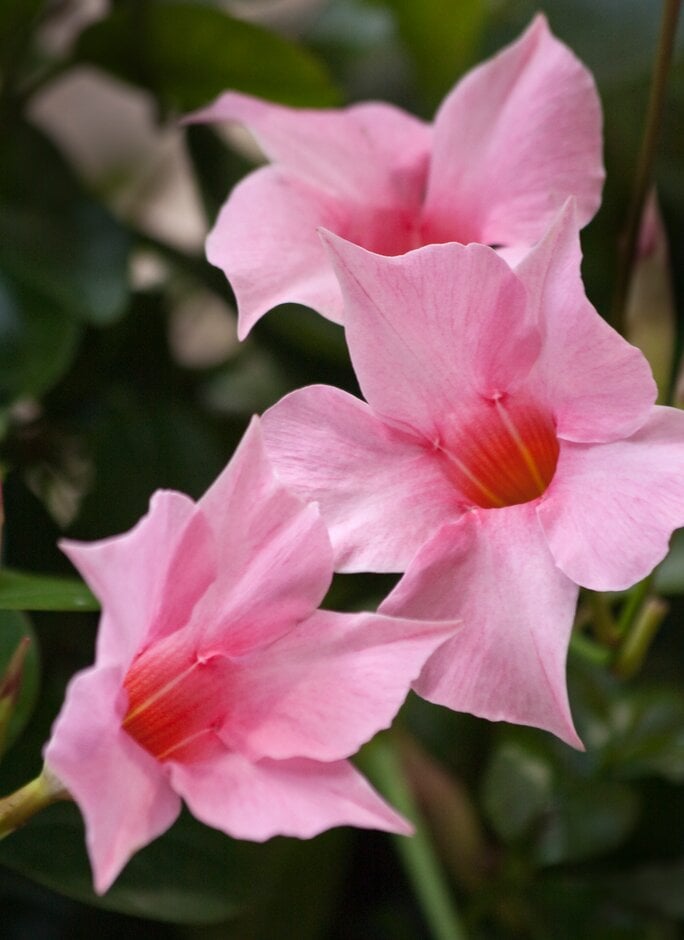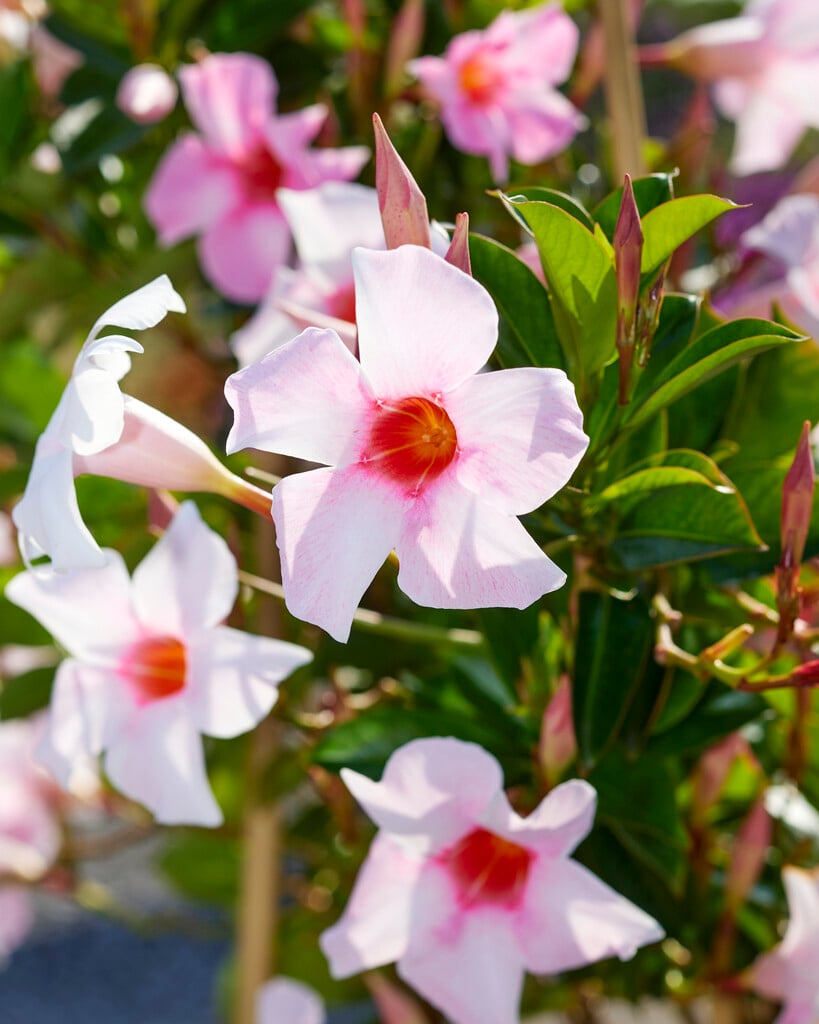Mandevilla Sundaville Cream Pink ('Sunparapibra'PBR) (Sundaville Series)
mandevilla [Sundaville Cream Pink]
An exotic, climbing perennial with trumpet-shaped pink flowers with dark park centres that appear throughout the summer
Size
Ultimate height
4–8 metresTime to ultimate height
5–10 yearsUltimate spread
0.1–0.5 metresGrowing conditions
Moisture
Moist but well–drainedpH
Acid, Alkaline, NeutralColour & scent
| Stem | Flower | Foliage | Fruit | |
| Spring | ||||
|---|---|---|---|---|
| Summer | Pink | Green | ||
| Autumn | ||||
| Winter |
Position
- Full sun
Aspect
East–facing or West–facing
Exposure
Sheltered Hardiness
H1CBotanical details
- Family
- Apocynaceae
- Native to GB / Ireland
- No
- Foliage
- Semi evergreen
- Habit
- Climbing
- Potentially harmful
- May cause mild stomach upset if eaten, sap may cause skin irritation. Wear gloves and other protective equipment when handling
- Genus
Mandevilla can be woody climbers or perennials, often with tuberous roots, and twining stems bearing simple leaves and axillary racemes of showy, funnel-shaped flowers with 5 spreading lobes
- Name status
Trade
How to grow
Cultivation
Grow in a temperate or warm greenhouse or conservatory in peat-free, loam-based compost in full light but with shade from hot sun. Young plants can be grown in pots to stand outside in summer. Usually evergreen, but will drop leaves if too cold in winter
Propagation
Propagate by seed sown with heat in spring, or root softwood cuttings in late spring or semi-ripe cuttings in summer, with bottom heat
Suggested planting locations and garden types
- Patio and container plants
- Sub-tropical
Pruning
Pruning group 12 in late winter or early spring
Pests
Maybe susceptible to glasshouse red spider mite, glasshouse whitefly and mealybugs
Diseases
Generally disease-free
Get involved
The Royal Horticultural Society is the UK’s leading gardening charity. We aim to enrich everyone’s life through plants, and make the UK a greener and more beautiful place.

